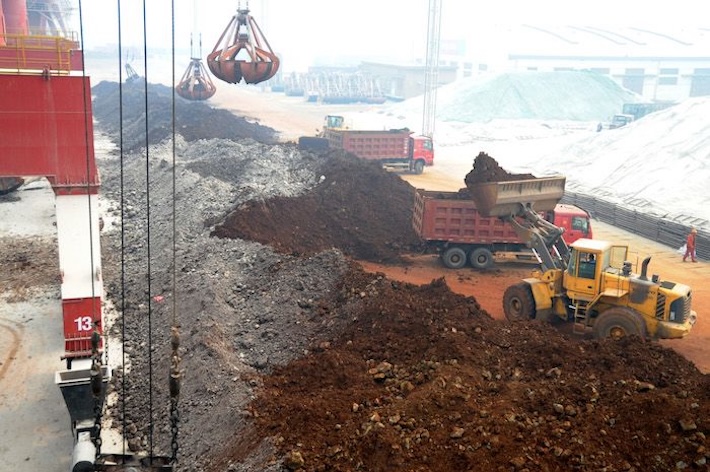(ATF) US Treasury Secretary Steven Mnuchin said on Thursday there would be no more shutdowns to stop the coronavirus pandemic, while some analysts predicting a second wave of infections would be less damaging.
“We can’t shut down the economy. I think we’ve learned that if you shut down the economy, you’re going to create more damage,” Mnuchin said in an interview on CNBC, a view shared by some analysts in financial markets.
His comments were echoed by President Donald Trump, who tweeted “We will have a very good Third Quarter, a great Fourth Quarter, and one of our best ever years in 2021. We will also soon have a Vaccine & Therapeutics/Cure. That’s my opinion. WATCH!”
This triggered Wall Street’s worst one-day fall in three months, but analysts are viewing this as a correction rather than a significant change in trend.
“With economies around the world progressively re-opening, the rising odds are that the second wave of infections will not be as deadly as the first one, and the bulked-up fiscal stimulus around the world, easy monetary policy should add a supplementary tonic to the recovery,” macro research firm BCA Research said in a note.
“Another round of lockdown caused by a severe second wave of infection represents the downside risk.”
But BofA Securities analysts said while there was concern about a second-wave of infections in the US, the risk of a resurgence sufficient to trigger renewed broad-based lockdowns was low.
The market is already in cautious mode after the US Federal Reserve predicted an economic contraction of 6.5% this year, while warning that the outlook remains uncertain.
“The Federal Reserve is wrong so often,” Trump said. “I see the numbers also, and do MUCH better than they do.”
Orders to close businesses to stop the virus’s spread beginning in mid-March have badly harmed the world’s largest economy, leading to tens of millions of layoffs and an unemployment rate of 13.3% in May, a figure reminiscent of the Great Depression 90 years ago.
Yet the virus remains deadly across the United States, with more than 112,900 deaths reported as of Wednesday and two million cases, while some states like Texas and North Carolina are seeing more hospitalisations from Covid-19 than they did a month ago.
Wall Street stocks reversed days of gains on Thursday, with major indices plunging into the red after the Labor Department reported another 1.5 million people filed new claims for unemployment benefits last week.
Layoffs reach 44 million
Layoffs caused by the coronavirus pandemic have reached 44.2 million in the US even as businesses try to reopen, and analysts warn of continuing damage to the world’s largest economy as Covid-19 shows few signs of abating.
The massive layoffs have become routine since shutdowns to stop the coronavirus from spreading began in mid-March, reaching their peak later that month and declining since.
Some workers are back at work as states reopen, but the total for the week ended June 6 is still well above any figure seen during the global financial crisis in 2008, even though it fell 355,000 from the prior week.
Rubeela Farooqi of High Frequency Economics said the data showed the US economy was clearly not back to normal. “States and businesses have reopened, but activity remains restricted and subdued, which will likely result in ongoing layoffs over coming weeks,” she said in an analysis.
Recovery or no benefits
White House economic advisor Larry Kudlow gave his own mixed review of Powell in an appearance on the Fox Business Network, even offering to provide “media training” for the central bank chief.
“I do think Mr Powell could lighten up a little… You know, a smile now and then, a little bit of optimism,” Kudlow said. “But basically, I don’t see the Fed as an obstacle here.”
The comments didn’t stop Wall Street traders from blundering through the day, pulling main indices back from recent gains that saw the tech-rich Nasdaq hit records two days in a row and the broad-based S&P 500 erase its losses for the year.
The benchmark Dow Jones Industrial Average dropped 6.9% at the close, while the Nasdaq was 5.3% in the red and the S&P down 5.9%.
Labor Department data showed about 20.9 million people were receiving unemployment payments in the week ended May 30, down from 21.3 million the week before – showing that people were either returning to work or had their initial claims denied.
All told, the report was in line with May’s unemployment rate, which declined to 13.3% from 14.7% in April as the US economy added 2.5 million jobs.
However, the Bureau of Labor Statistics said the actual jobless rate was likely three points higher that month, while in April the rate was closer to 20% overall because of an error in which workers were misclassified as employed when they had been laid off because of the pandemic.
Ernie Tedeschi, head of fiscal analysis at investment banking firm Evercore ISI, said the data seem at odds with each other.
There is “evidence that some firms are indeed hiring. But other firms are clearly still laying off, perhaps closing down,” he tweeted.
A separate Labor Department report released on Thursday showed a better-than-expected rise in producer prices of 0.4% in May, reversing a 1.3% decline in April.
with additional reporting by AFP





















